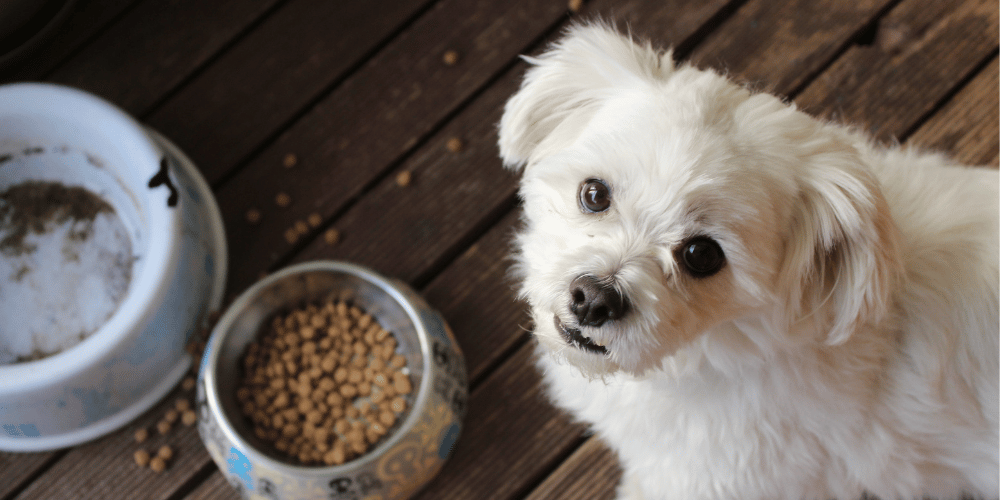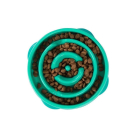
Are you struggling to get through mealtime without your dog snapping at you? If this is the case, your pup probably has a degree of food aggression. But don't worry; you aren't alone; many dogs have this problem! Through this article, we help you understand and solve this issue so mealtime can become a more peaceful activity within your household – and no, no training supplies are needed, we promise.
How to Recognise Food Aggression
Food aggression is a form of resource guarding in which a dog becomes very defensive when eating, either toward humans or other animals. We've narrowed down this behaviour to three degrees of aggression; mild, moderate, and severe.
Mild: stiffened body, head down, showing of teeth, growling, and their body will hover over the meal as a way to protect it.
Moderate: The whites of their eyes being visible, ears held back, tail lowered, snapping or lunging when approached.
Severe: Biting.
Aggression during mealtime can be pretty common among dogs; however, if your pup shows several of the signs mentioned above, it's probably time to try to fix this issue.
Preventions
Be Consistent
Dogs have an exquisite internal clock; therefore, with consistency, they quickly learn to tell when to get up, go for a walk, or it's time for their humans to come home. Mealtime should be no different.
Many dogs experience food aggression because they fear or have anxiety over when the next meal is coming. This fear is suggested to come from their pack mentality, and how the alpha would eat first, and if there is any left, everyone else eats (i.e. your pup). Be sure to be regular in feeding and have a specific feeding time to remove any anxiety and help calm your dog down during mealtime.
Avoidance
The best treatment for food-related aggression is avoidance, where you avoid placing the dog in situations that are likely to cause aggression. Unfortunately, often by the time you notice your dog has developed food aggression, it's a bit too late. However, you can use this prevention at any stage in your dog's life. For some dogs, avoidance can be a lifelong program; for others, it could help fix their aggression.
Avoidance is relatively simple to implement. First, the dog is fed its meals behind a secure, closed door. Then, once the dog has finished eating, it is let out of the room, and the owner can retrieve the bowl and any remaining food when the dog is not in the vicinity. Doing this eliminates any worry or fear your dog may experience during mealtime due to their surroundings.
Keep Mealtime Relaxed
Dogs love to eat, so mealtimes can be very exciting, but if your pup becomes overly excited, they will be more likely to eat too fast or start showing aggression when you approach them. So before you offer your dog their food, ask them to sit and wait until they are calm before putting the bowl down on the ground.
Furthermore, never feed your dog before or while the humans are eating. Humans eat first; when they're finished, your dogs eat. This will reinforce your status as the Pack Leader, reminding them you're in charge.
Summary
To prevent aggression in dogs, owners should never directly intervene via hitting, yelling or physical restraint. While these actions may interrupt the behaviour in the moment, it is unlikely to solve the problem in the long term. A confrontation may lead to intensified aggression displayed both at the moment of conflict and in the future or increase anxiety in certain dogs – making their food aggression worse. The key to beating food aggression is obedience. Your puppy needs to be able to listen and follow your orders, which ultimately should help overcome the aggression.
